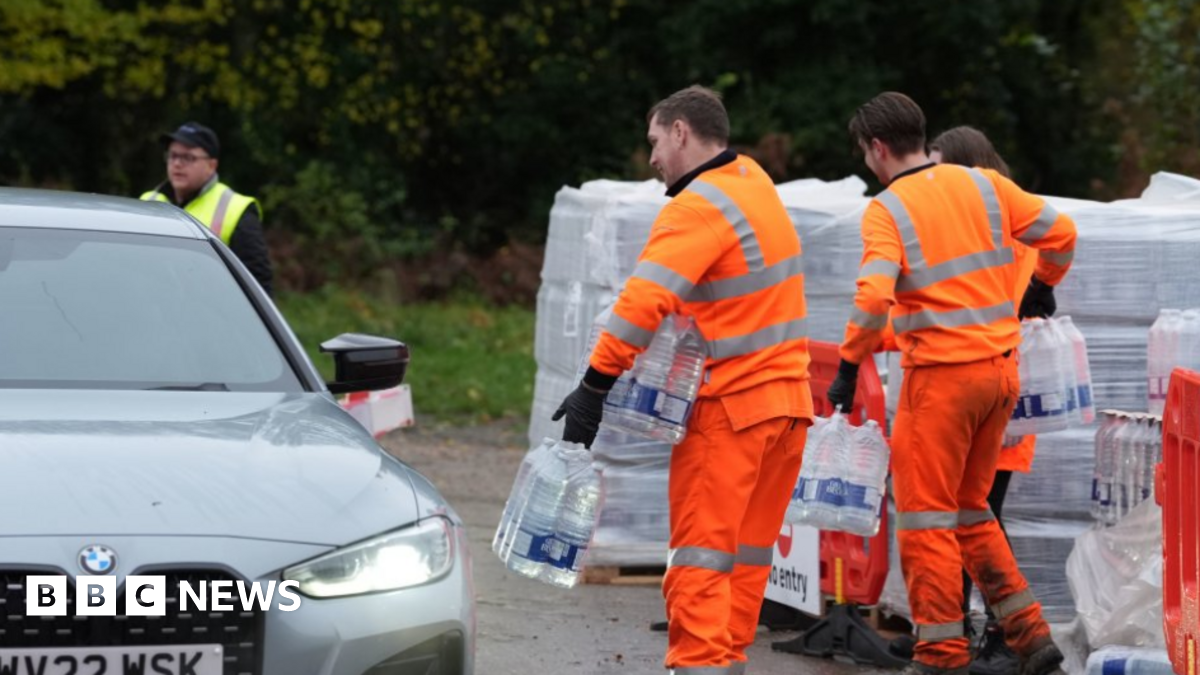Scientists sound alarm over unprecedented conditions in capital city: ‘We may have to evacuate’ – The Cool Down

Report on the Water Crisis in Tehran and its Implications for Sustainable Development Goals
1.0 Executive Summary
Tehran, the capital of Iran, is confronting a severe water crisis, characterized by extreme drought and critically low reservoir levels. This situation poses a direct threat to the well-being of its population and undermines progress toward several key Sustainable Development Goals (SDGs), most notably SDG 6 (Clean Water and Sanitation), SDG 11 (Sustainable Cities and Communities), and SDG 2 (Zero Hunger). This report analyzes the causes of the crisis, its connection to global sustainability targets, and potential mitigation strategies aligned with the 2030 Agenda for Sustainable Development.
2.0 Analysis of the Current Situation
The water shortage in Tehran has reached a critical stage, with authorities considering extreme measures, including water rationing and potential evacuation. This directly challenges the core tenets of SDG 11, which aims to make cities inclusive, safe, resilient, and sustainable.
2.1 Key Indicators of the Crisis
- Dam levels supplying the city have fallen to below 10% of their total capacity.
- The region has experienced an 89% decrease in rainfall compared to the previous year, marking the most severe drought in five decades.
- The government has initiated controversial cloud seeding operations as a desperate measure to induce precipitation.
3.0 Causal Factors and their Relation to SDGs
The crisis is a result of multiple interconnected factors that highlight failures in sustainable resource management and climate action, impacting several SDGs.
3.1 Unsustainable Water Management (SDG 6)
Iran’s water stress is exacerbated by systemic mismanagement, directly contravening the principles of SDG 6, which calls for the sustainable management of water resources.
- Groundwater Over-extraction: Approximately 70% of the nation’s groundwater is classified as over-extracted. This unsustainable practice leads to land subsidence, with Tehran sinking by an estimated 30 centimeters annually, compromising urban infrastructure and threatening SDG 11.
- Inefficient Agricultural Use: Agriculture accounts for over 90% of Iran’s total water consumption. The pursuit of food self-sufficiency (related to SDG 2) has been implemented with outdated and inefficient irrigation infrastructure, leading to massive water waste.
3.2 Climate Change and Environmental Impact (SDG 13 & SDG 15)
The crisis is intensified by global environmental changes, underscoring the urgency of SDG 13 (Climate Action).
- Aggravated Drought Conditions: Heat-trapping pollution from fossil fuels contributes to more severe and prolonged droughts, making rainfall patterns more erratic and arid regions drier.
- Geopolitical Tensions: Regional conflicts damage existing water infrastructure and impede diplomatic cooperation, hindering progress towards SDG 17 (Partnerships for the Goals) for shared water resource management.
4.0 Recommendations for a Sustainable Path Forward
Addressing Tehran’s water crisis requires a multi-pronged approach rooted in the principles of the Sustainable Development Goals.
4.1 Transition to Sustainable Agriculture (SDG 2 & SDG 6)
The most impactful intervention would be to reform the agricultural sector. A strategic shift towards less water-intensive crops and modern, efficient irrigation techniques could significantly reduce water demand. This would create a positive feedback loop, advancing both SDG 2 by ensuring long-term food security and SDG 6 by preserving vital water resources for urban and environmental needs.
4.2 Integrated Water Resource Management (SDG 6 & SDG 11)
A comprehensive strategy is required to ensure water security for Tehran. This includes:
- Investing in modernizing urban and agricultural water infrastructure.
- Implementing policies that promote water conservation and efficiency.
- Aligning national development plans with the sustainable management principles outlined in SDG 6.
Analysis of Sustainable Development Goals in the Article
1. Which SDGs are addressed or connected to the issues highlighted in the article?
The article on Tehran’s water crisis touches upon several interconnected Sustainable Development Goals (SDGs). The analysis identifies the following primary and related SDGs:
- SDG 6: Clean Water and Sanitation: This is the most central SDG, as the entire article revolves around a severe water shortage, drought, over-extraction of water resources, and the need for better water management.
- SDG 11: Sustainable Cities and Communities: The crisis is specifically impacting a major capital city, Tehran. The article discusses threats to the urban population, including potential evacuation and the physical sinking of the city, which directly relates to the sustainability and resilience of urban environments.
- SDG 13: Climate Action: The article explicitly links the severity and length of the drought to climate change, mentioning “heat-trapping pollution of dirty energy makes extreme weather events like droughts longer and more severe.” This highlights the need for climate action to mitigate such impacts.
- SDG 2: Zero Hunger: The article connects the water crisis to agricultural practices. It notes that Iran’s quest for food self-sufficiency led to an increase in cultivated lands and that “agriculture accounts for over 90% of the nation’s water use,” pointing to the need for sustainable agricultural systems that do not deplete water resources.
2. What specific targets under those SDGs can be identified based on the article’s content?
Based on the issues discussed, several specific SDG targets can be identified:
- Target 6.4: By 2030, substantially increase water-use efficiency across all sectors and ensure sustainable withdrawals and supply of freshwater to address water scarcity.
- Justification: The article highlights extreme inefficiency, stating that “agriculture accounts for over 90% of the nation’s water use, and much of that is wasted.” It also points to unsustainable withdrawals, noting that “70% of Iran’s groundwater is considered over-extracted.”
- Target 11.5: By 2030, significantly reduce the number of deaths and the number of people affected… caused by disasters, including water-related disasters.
- Justification: The drought is presented as a water-related disaster with severe consequences for the population of Tehran. The Iranian President’s warning that “we may have to evacuate” directly refers to the potential for a large number of people to be affected. The city sinking “by about 30 centimeters a year” is another disastrous impact.
- Target 13.1: Strengthen resilience and adaptive capacity to climate-related hazards and natural disasters in all countries.
- Justification: The article describes Tehran’s situation as a failure of resilience in the face of a climate-related hazard (a severe drought worsened by climate change). The consideration of “drastic measures” like rationing and evacuation shows a low adaptive capacity to the current crisis.
- Target 2.4: By 2030, ensure sustainable food production systems and implement resilient agricultural practices.
- Justification: The article critiques Iran’s current agricultural model, which was expanded to achieve “self-sufficiency” but is now unsustainable due to its high water consumption. The suggestion to pivot to “more sustainable, less water-intensive agricultural practices” directly aligns with this target.
3. Are there any indicators mentioned or implied in the article that can be used to measure progress towards the identified targets?
The article provides several quantitative and qualitative data points that can serve as indicators to measure the severity of the problems and, conversely, progress towards the targets.
- For Target 6.4 (Water-use efficiency and water stress):
- Indicator: Level of water stress. The article provides multiple data points for this: Iran is ranked as the “14th-most water-stressed country”; dams supplying the city are at “less than 10% of capacity”; there has been an “89% drop in rainfall compared to last year”; and “70% of Iran’s groundwater is considered over-extracted.”
- Indicator: Water use by sector. The fact that “agriculture accounts for over 90% of the nation’s water use” is a key indicator of where efficiency improvements are most needed.
- For Target 11.5 (Impact of water-related disasters):
- Indicator: Number of people affected by disasters. The potential need to “evacuate” the city of Tehran implies a massive number of affected people.
- Indicator: Physical impact on infrastructure. The city “sinking by about 30 centimeters a year” due to groundwater extraction is a specific, measurable indicator of the disaster’s physical impact on the urban environment.
- For Target 13.1 (Resilience to climate hazards):
- Indicator: Severity of climate-related hazards. The mention of the “worst drought in fifty years” and an “89% drop in rainfall” are indicators of the increasing severity of these events.
- For Target 2.4 (Sustainable agriculture):
- Indicator: Water consumption in agriculture. The figure that agriculture uses “over 90%” of the nation’s water is a direct indicator of the sustainability of the current food production system. A reduction in this percentage would indicate progress.
4. Summary Table of SDGs, Targets, and Indicators
| SDGs | Targets | Indicators Identified in the Article |
|---|---|---|
| SDG 6: Clean Water and Sanitation | 6.4: Substantially increase water-use efficiency and address water scarcity. |
|
| SDG 11: Sustainable Cities and Communities | 11.5: Significantly reduce the number of people affected by water-related disasters. |
|
| SDG 13: Climate Action | 13.1: Strengthen resilience and adaptive capacity to climate-related hazards. |
|
| SDG 2: Zero Hunger | 2.4: Ensure sustainable food production systems and resilient agricultural practices. |
|
Source: thecooldown.com
What is Your Reaction?
 Like
0
Like
0
 Dislike
0
Dislike
0
 Love
0
Love
0
 Funny
0
Funny
0
 Angry
0
Angry
0
 Sad
0
Sad
0
 Wow
0
Wow
0




















































.jpg.webp?itok=0ZsAnae9#)

























